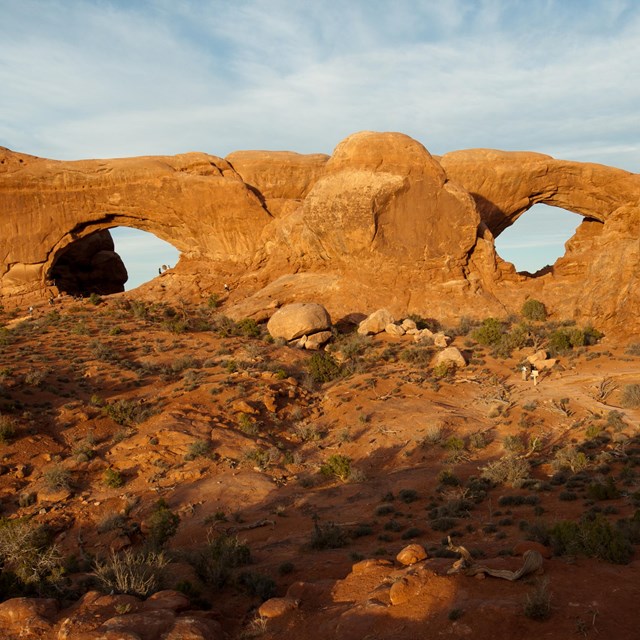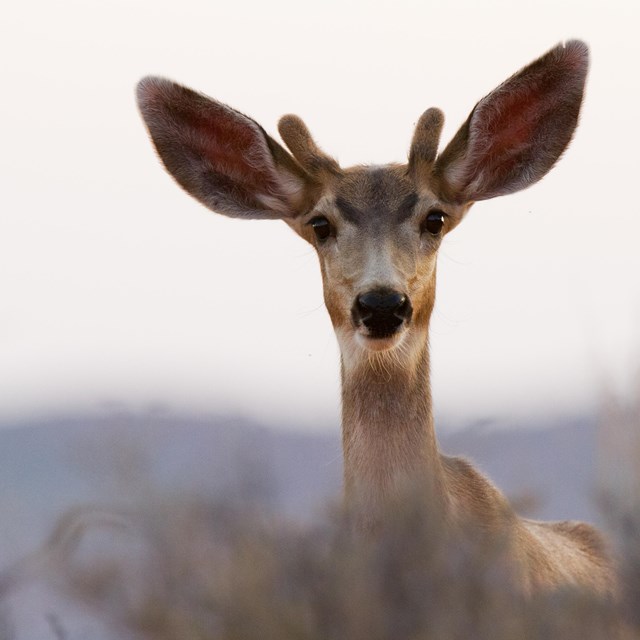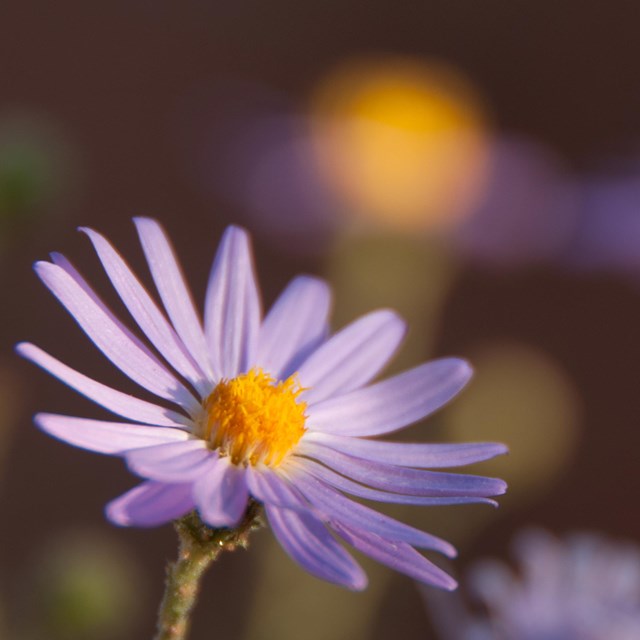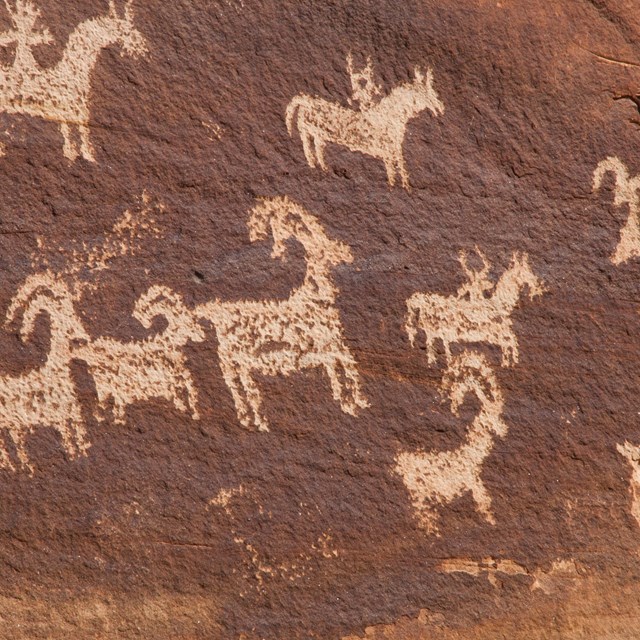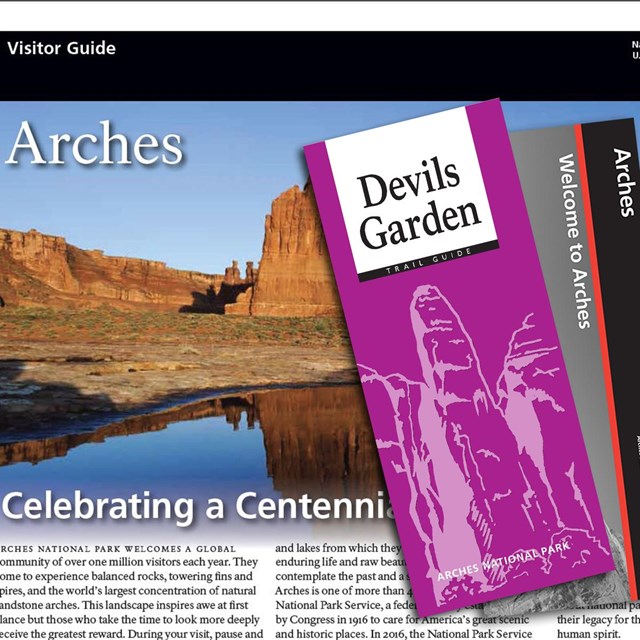
© Rick Wheeler Doing a report on Arches? These student information pages provide a great introduction to the park. Covering animals, plants, rocks, interesting park facts and much more, these pages have everything you need to get your project started. Arches National Park, for its size, has more natural holes in rocks than anywhere in the world. Over 2,000 arches and windows, as well as many delicately carved pinnacles, spires, and strangely shaped rocks, make up the scenery in this land of red rocks. Delicate Arch is the most well known arch. Landscape Arch, located at Devils Garden, stretches over 300 feet in length and is one of the largest arches in North America. Other interesting places in the park include Courthouse Towers, Balanced Rock, Fiery Furnace, and The Windows Section.
WeatherArches is part of the Colorado Plateau, a "high desert" region that experiences wide temperature fluctuations, sometimes over 40 degrees in a single day. The temperate (and most popular) seasons are spring (April-May) and fall (mid-September-October), when daytime highs average 60 to 80 F and lows average 30 to 50 F. Summer temperatures often exceed 100 F, making strenuous exercise difficult. Winters are cold, with highs averaging 30 to 50 F, and lows averaging 0 to 20 F. Learn More |
Last updated: July 3, 2021

